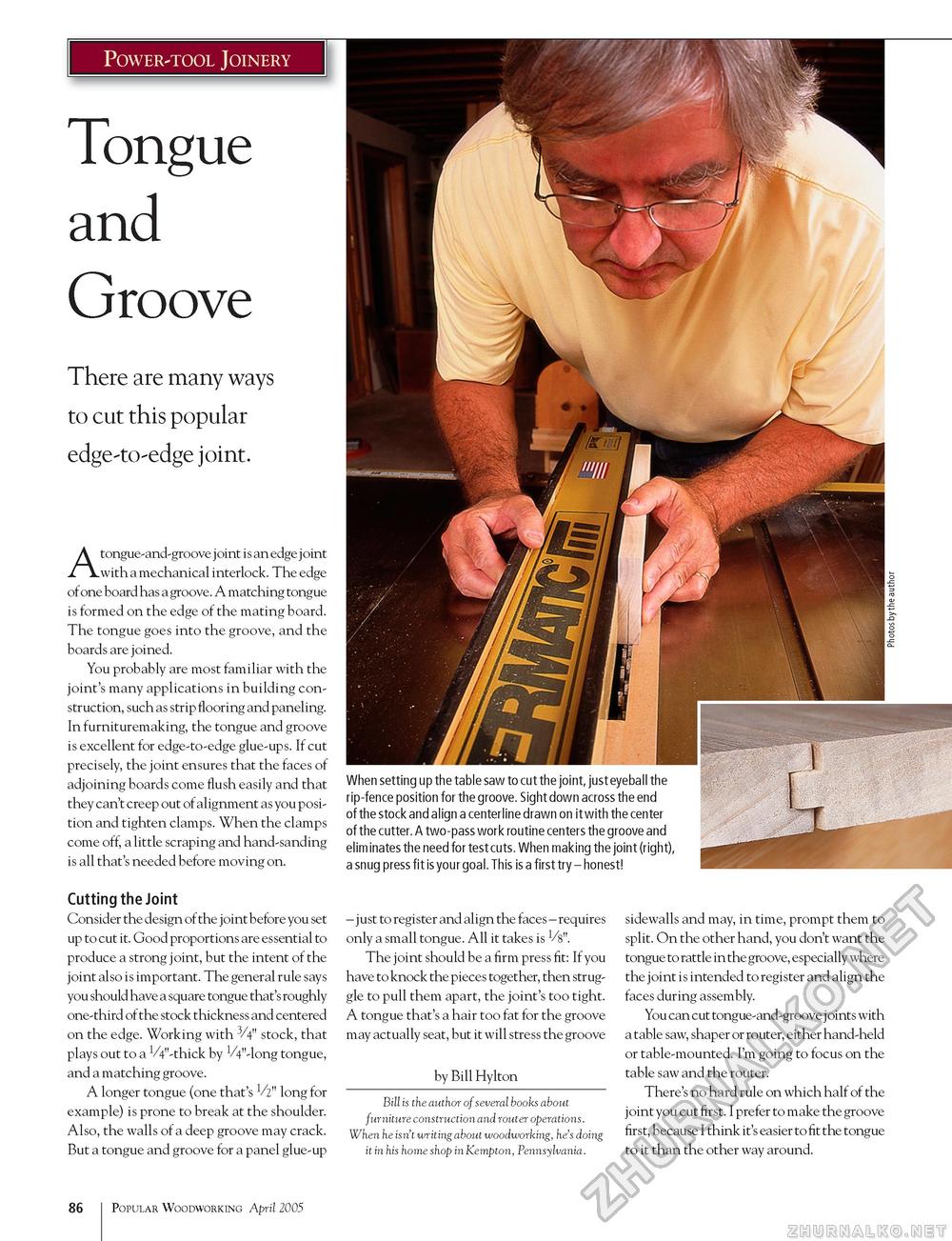Popular Woodworking 2005-04 № 147, страница 90
Power-tool Joinery Tongue and Groove There are many ways to cut this popular edge-to-edge joint. Atongue-and-groove j oint is an edge j oint with a mechanical interlock. The edge of one board has a groove. A matching tongue is formed on the edge of the mating board. The tongue goes into the groove, and the boards are joined. You probably are most familiar with the joint's many applications in building construction, such as strip flooring and paneling. In furnituremaking, the tongue and groove is excellent for edge-to-edge glue-ups. If cut precisely, the joint ensures that the faces of adjoining boards come flush easily and that they can't creep out of alignment as you position and tighten clamps. When the clamps come off, a little scraping and hand-sanding is all that's needed before moving on. Cutting the Joint Consider the design of the joint before you set up to cut it. Good proportions are essential to produce a strong joint, but the intent of the joint also is important. The general rule says you should have a square tongue that's roughly one-third of the stock thickness and centered on the edge. Working with 3/4" stock, that plays out to a V4"-thick by V4"-long tongue, and a matching groove. A longer tongue (one that's V2" long for example) is prone to break at the shoulder. Also, the walls of a deep groove may crack. But a tongue and groove for a panel glue-up When setting up the table saw to cut the joint, just eyeball the rip-fence position for the groove. Sight down across the end of the stock and align a centerline drawn on it with the center of the cutter. A two-pass work routine centers the groove and elim inates the need for test cuts. When making the joint (right), a snug press fit is your goal. This is a first try - honest! - just to register and align the faces - requires only a small tongue. All it takes is Vs". The joint should be a firm press fit: If you have to knock the pieces together, then struggle to pull them apart, the joint's too tight. A tongue that's a hair too fat for the groove may actually seat, but it will stress the groove by Bill Hylton Bill is the author of several books about furniture construction and router operations. When he isn't writing about woodworking, he's doing it in his home shop in Kempton, Pennsylvania. sidewalls and may, in time, prompt them to split. On the other hand, you don't want the tongue to rattle in the groove, especially where the joint is intended to register and align the faces during assembly. You can cut tongue-and-groove j oints with a table saw, shaper or router, either hand-held or table-mounted. I'm going to focus on the table saw and the router. There's no hard rule on which half of the joint you cut first. I prefer to make the groove first, because I think it's easier to fit the tongue to it than the other way around. 86 1 Popular Woodworking April 2005 |








